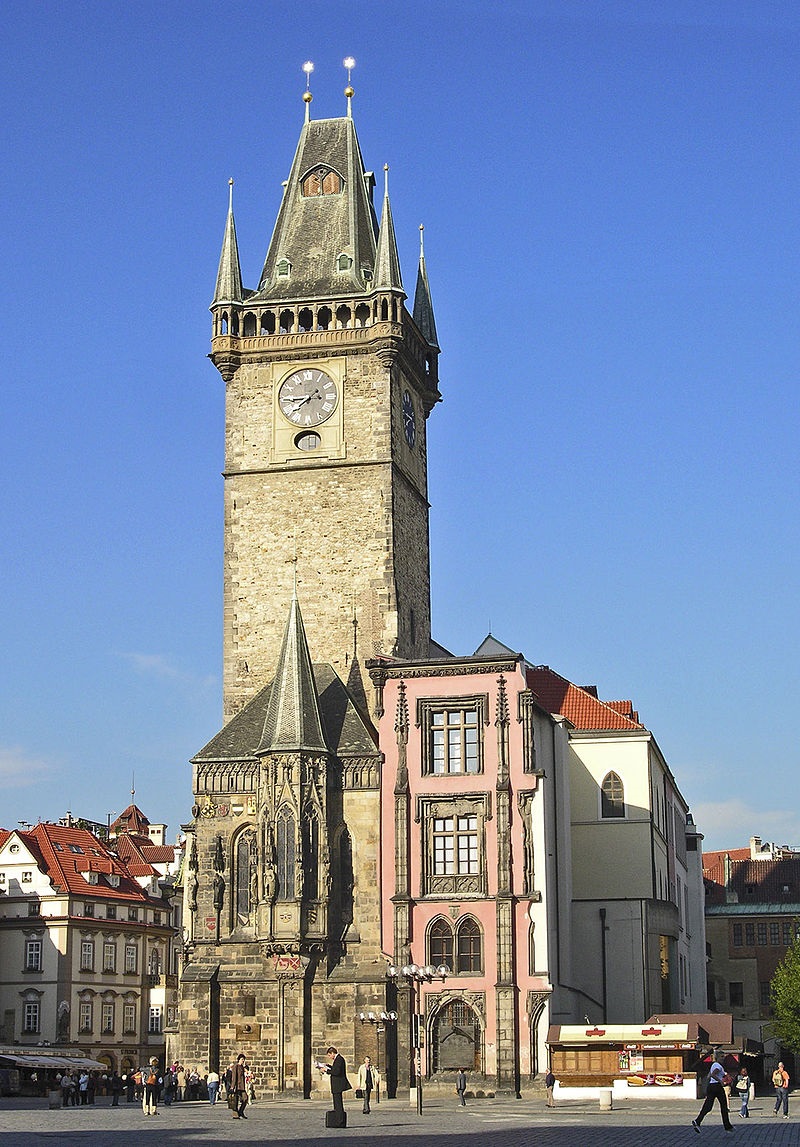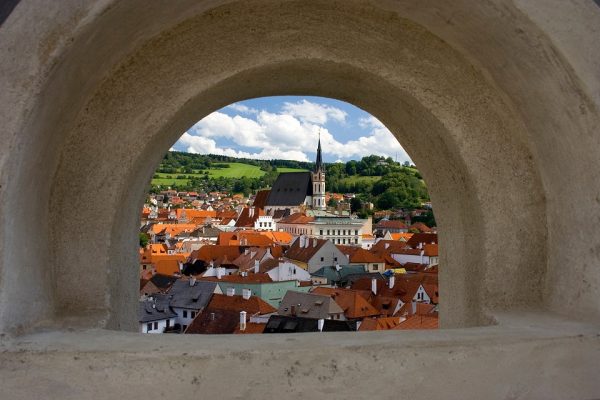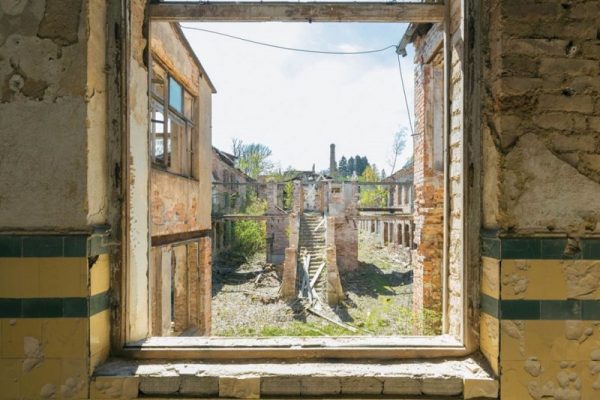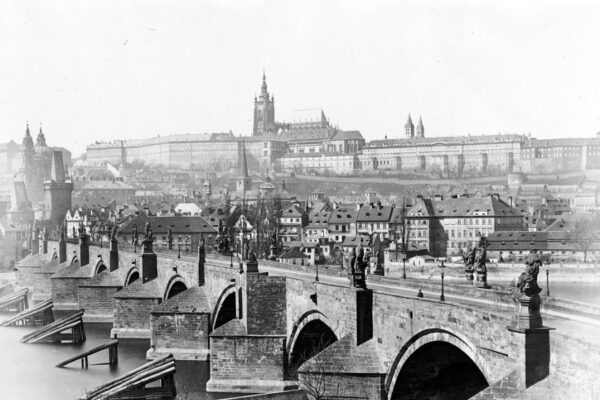What I am sharing today was a published extract from the speech delivered by Count Lützow (Lützow) W, D. LITT. OXON. PH.D. PRAG., at the Old Town Hall of Prague on the occasion of the visit of the Lord Mayor and Deputation of the Coronation of the city of London on the 18th of September, 1911. The images were not a part of the document, only the text of the speech is being reproduced. The document was called The Old Town Hall of Prague by Count Lützow.
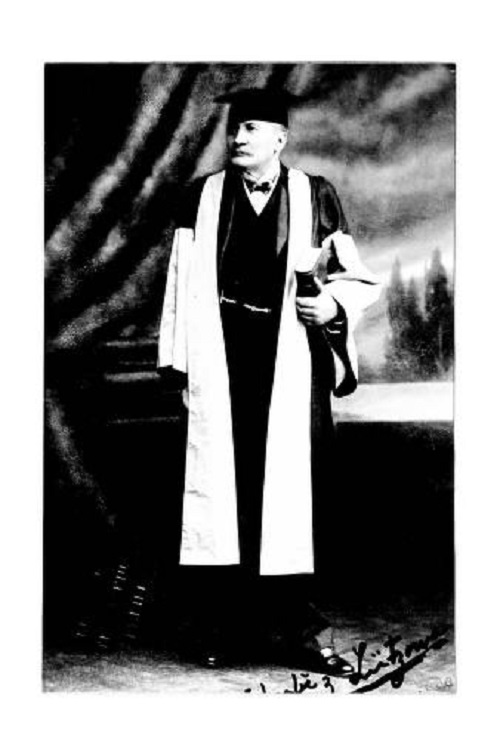
Let’s delve right in…
Prague situated in the centre of Bohemia, and vastly superior in population to all other cities of the country has always held a very prominent place in the annals of our land.
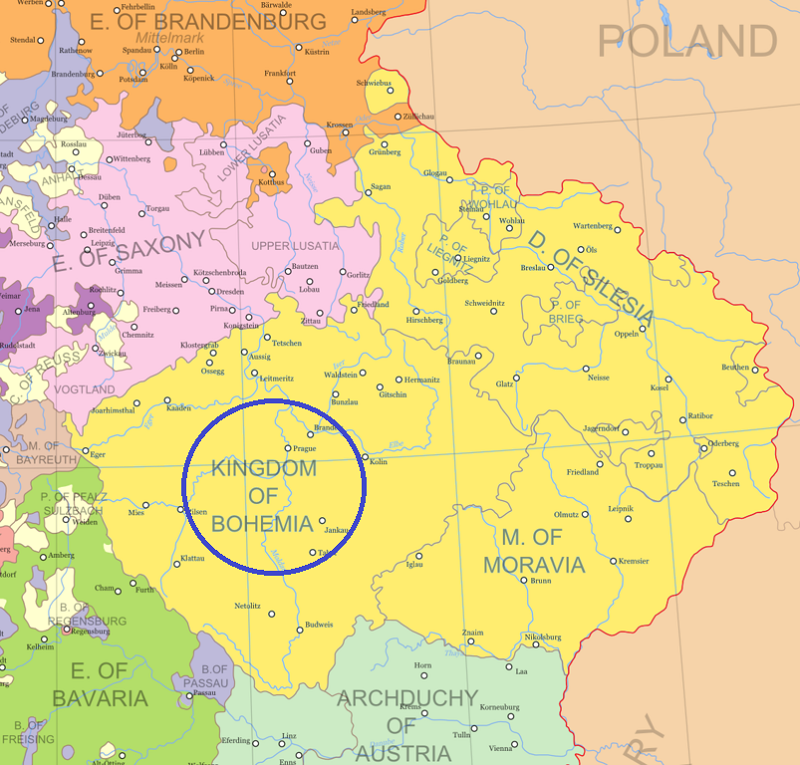
Map of the area in 1648.
Our ancient chronicles often refer to Prague as the mother and head of all Bohemian cities.
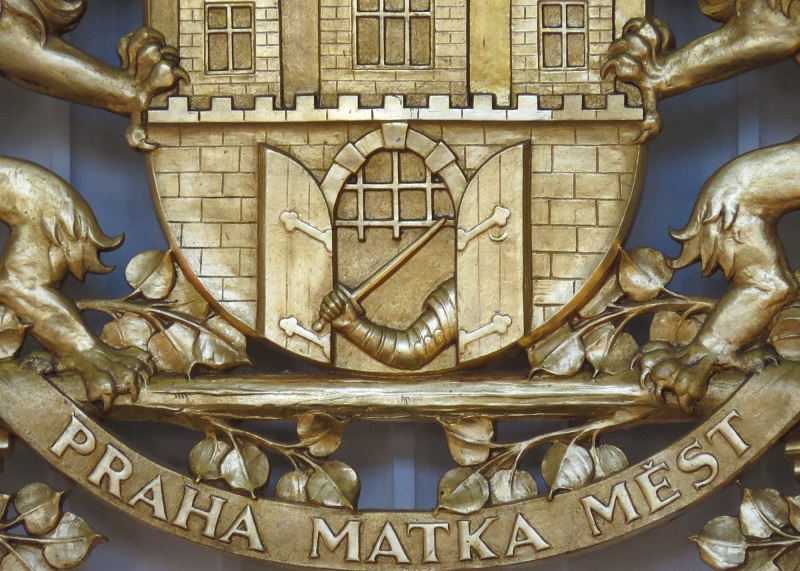
Similarly the Staroměstská radnice, town hall of the old city may be considered as the centre of the historical interest of Prague.
As Prague is a very ancient city, the town or rather towns of Prague enjoyed municipal privileges at a very early date a town hall was undoubtedly one of the earliest buildings, and it occupied part of the site of the present building. The chapel is now the only remaining part of this earliest building and it dates from the year 1338; the other buildings then erected at that spot were destroyed by fire in 1399.
Kytka’s Insert: Please click this link to see the Old Town Hall through the years as it changed.
The following century, the fifteenth, is notable for the condemnation of Hus — to which I shall again allude — and for the Hussite Wars. In these wars the city of Prague took a prominent part. The battles of the Žižkov and the Vyšehrad were fought either within the boundaries of the present town or in its close neighborhood.
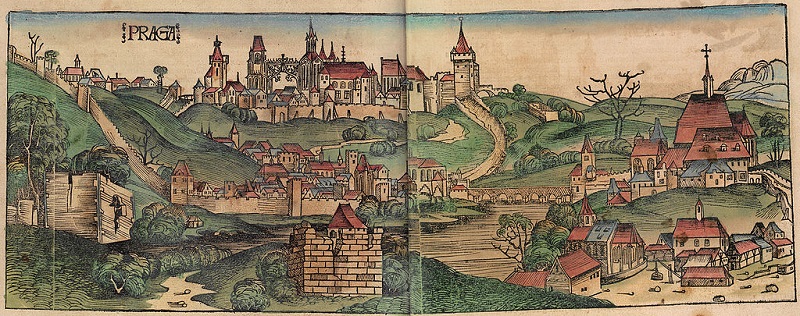
Woodcut from the Nuremberg Chronicle of 1493.
I may perhaps be allowed to quote here a few words from my own writings; “One of the most important results of the battles of the Žižkov and the Vyšehrad was the temporary supremacy over Bohemia, or at least die greatest part of the country which the city of Prague obtained. The mother and head of the Bohemian cities which had gloriously and successfully defended the religious and political liberty of the country, not unfairly claimed the leadership.”
During the whole period of the Hussite Wars Prague is always the centre of the events.
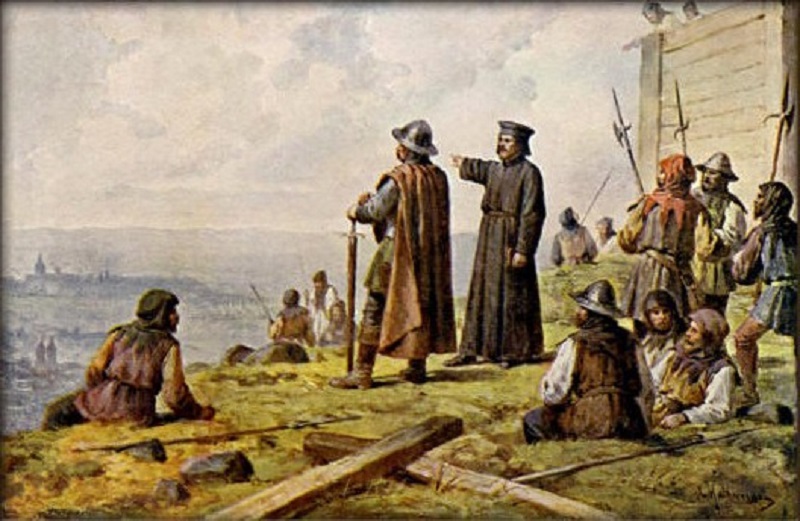
Jan Žižka with a Hussite priest looking over Prague after the Battle of Vítkov Hill by Josef Mathauser
The great tragedy begins there with the troubles that broke out after the death of King Venceslas, and civil dissensions between the new town and the more conservative old town immediately precede the decisive and final Battle of Lipany.
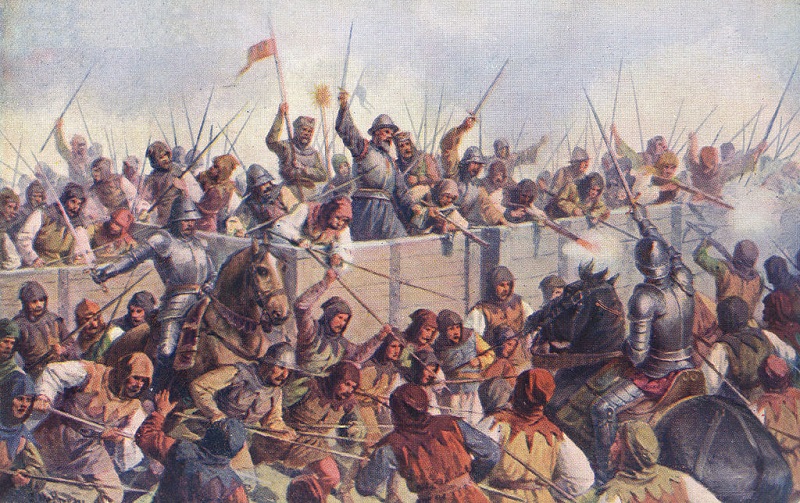
Battle of Lipany 1434 by Josef Mathauser
It would be interesting — did time permit — to allude to the many historical events, such as the arrestation of the priest John of Želivo, which took place in the town hall at this time.
The stormy period of the Hussite Wars was naturally unfavorable to the erection of new buildings; and though the town hall must long have become too small, it was only after the reestablishment of peace that the council house was rebuilt and considerably enlarged by the inclusion of an adjoining house which had been lift to the town by the widow of one of the citizens. At this time also the tower adjoining the ancient chapel was built and the famed clock placed on it.
Though the acceptation of the compacts which shortly followed the Battle of Lipany secured at least a temporary agreement between the Romanists and the Hussites of Bohemia, the whole period of Bohemian history which begins with the Hussite wars and ends with the Battle of White Mountain 1620 is a very stormy one, The kings of Bohemia were very often absent from the country and the chronicles of the time record constant municipal strife generally founded on religious controversies. The unfortunately little known Chronicles of Prague by Bartoš, the writer and Sixt of Ottersdorf describe these struggles in a very picturesque manner, and well deserve to rank with the writings of the better known Italian chroniclers.
Kytka’s Insert: Very little known on the other hand are the works of Bartoš, surnamed “pisář” (the writer), as he was for many years employed as secretary by the city of Prague, and those of Sixt of Ottersdorf. The work of Bartoš; (or Bartholomew) entitled the Chronicle of Prague has great historical value. He describes the troubles that befell Prague and Bohemia generally during the reign of the weak and absentee sovereign King Louis. The year of the birth of Bartoš is uncertain, but it is known that he died in 1539. The somewhat later work of Sixt of Ottersdorf (1500–1583) deals with a short but very important episode in the history of Bohemia. It is entitled Memorials of the Troubled Years 1546 and 1547. The book describes the unsuccessful rising of the Bohemians against Ferdinand I. of Austria. Sixt took a considerable part in this movement, a fact that greatly enhances the value of his book.
The period of Bohemian independence ends with the Battle of the White Mountain. The Bohemian Protestants chose Frederick of the Palatinate as their king, and he and his English wife Elisabeth, daughter of James I. ruled for one brief winter at Prague. The Battle of the White Mountain fought in the immediate neighborhood of Prague was shortly followed by the execution of the Bohemian leaders. It took place in that part of the market place which immediately adjoins the chapel of the town hall.
The period that follows the batde of the White Mountain is devoid of interest. I do not care to refer here to the manner in which the Roman religion was reestablished by force, nor to the oppression from which the national language suffered for a lengthy period.
In 1774 the four towns of which Prague had hitherto consisted, the old town, new town, little town and Hradčany were united under one municipality. No immediate enlargement of the townhall was however undertaken, and some changes that were made to obtain more space unfortunately to a certain extent spoilt the architecture of the building. The change in the municipal government did not for the moment secure greater attendance to the citizens. The mayor of the united community was an official appointed by the government. It is only since 1848 that the citizens possess the right of electing their mayor.
As the want of space in the town hall became more and more serious, it was at last decided to enlarge the building by the purchase of four adjoining houses. This was done in 1832, but the system adapted for the reconstruction of the town hall caused great dissatisfaction and it is now contemplated to rebuilt it entirely with considerable enlargements. This has become even more necessary since the new districts of Vyšehrad, Holešovice–Bubny, and Libeň have also been placed under the central municipality of Prague.
One of the most interesting facts that in Bohemia, and specially in Prague mark the period of peace at the beginning of the 19th Century is the Revival of the National Feeling and Language. It is not my purpose to analyse here the tangled involved causes which resulted, in the great fact that a buried nationality burst its graveclothes and reappeared radiant in the world. It is sufficient to state that the greatest part of Bohemia, formerly almost Germanised has now again become thoroughly Slavic. The national language for a time used almost only by the peasantry in outlying districts is now freely and generally used by the educated classes in most parts of the country. Prague itself that had for a time acquired almost the appearance of a German town, has now a thoroughly Slavic character.
The national literature also which had almost ceased to exist is in a very flourishing state particularly since the foundation of a national university. At no period have so many, and so valuable books been written in the Bohemian language. I may add that the municipal administration in the centre of which we now are, is also entirely carried on in the nationed language.
It remains to me to refer briefly to the principal halls and the chapel in the building we are about to visit.

HDR tonemapped
The Great Modern Hall of Council was built in 1879 -1880, and is adorned by a portrait of our sovereign the emperor Francis Joseph, the work of the Bohemian painter Straširybka, better known under the name of Canon, which he adopted.
Two large paintings in this hall, works of the famed Bohemian artist Brožík well deserve notice.

The Brožík Assembly Hall
The one represents Hus at Constance on the memorable 6th of July when the council condemned him to death.
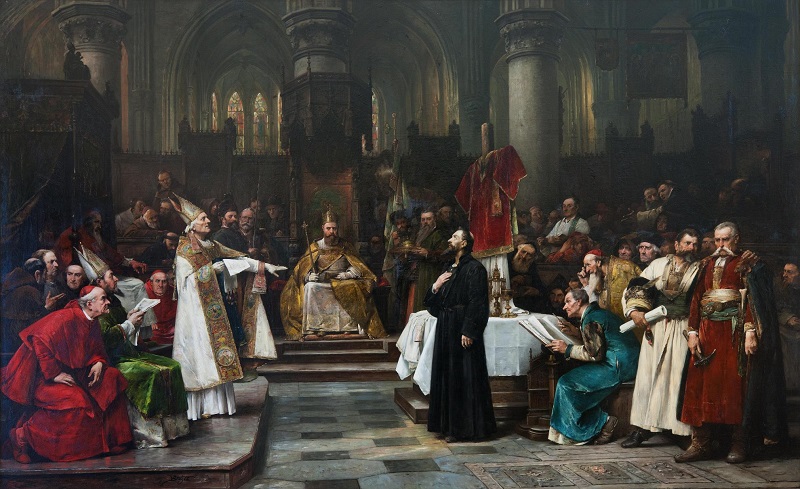
This event is of course of great historical interest as it marks the beginning of the Hussite wars. A very important episode in the religious strife which with brief intervals continued in Bohemia for two centuries is represented in the other great picture in this hall. I refer to the Election of King George of Podebrad.
He was the leader of the national or protestant party, but by a sudden decision the Roman party also gave him their votes. The picture represents the moment when the supreme burgrave Zdeněk of Sternberg is doing homage to his new sovereign.
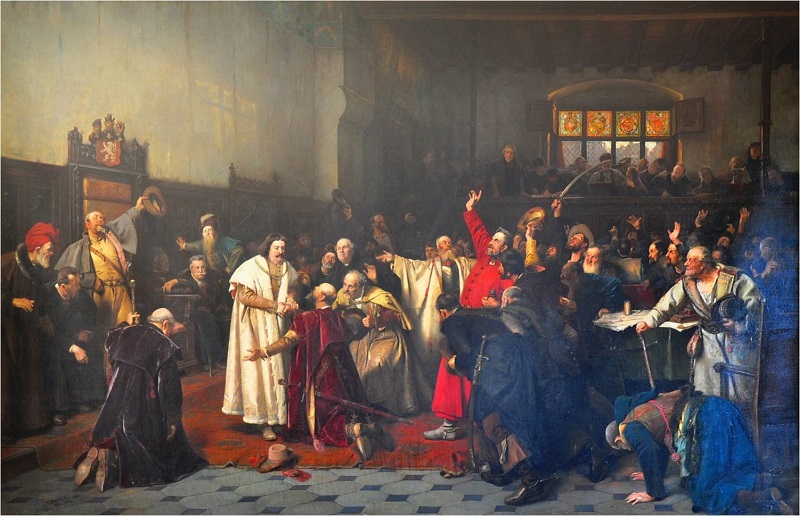
The Old Council Chamber is also of great interest. The architecture is late Gothic and the room is decorated with the arms of the ‘guilds of Prague, The very handsome paneled ceiling deserves notice.

The Old Council Hall
From the East door of the old council chamber, we enter the Burghers Room, which has an ancient wooden balcony looking on the marketplace. The ceiling is similar to that of the old council hall.
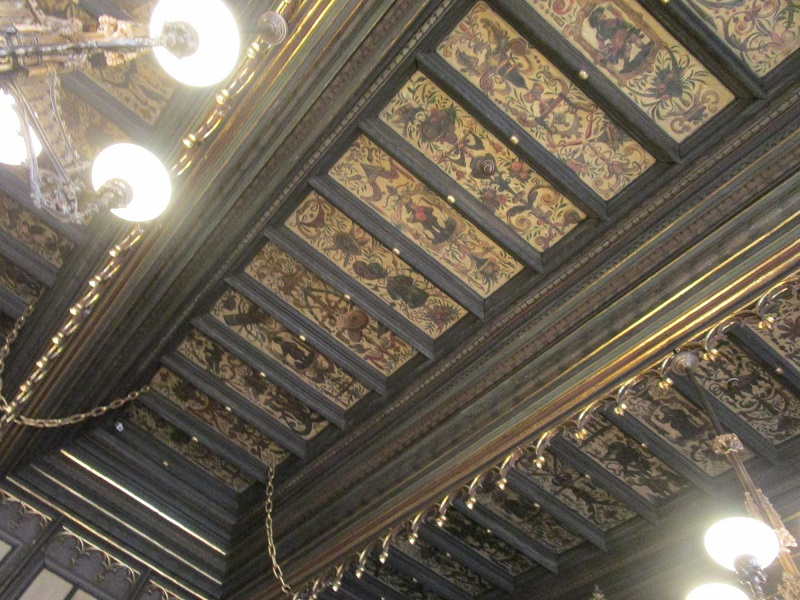
Under this room is an old dungeon where prisoners were often confined before being tried.

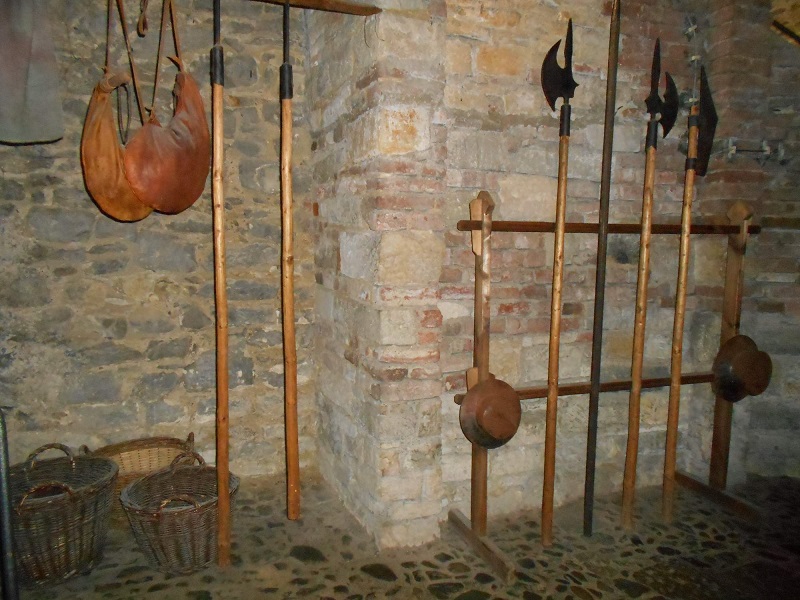
To the East of this part of the townhall is the Chapel, the oldest part of the whole building. It is considered one of the gems of Bohemian Gothic of the 14th Century.

It was built as already mentioned in 1338. The Gothic high windows are very fine.
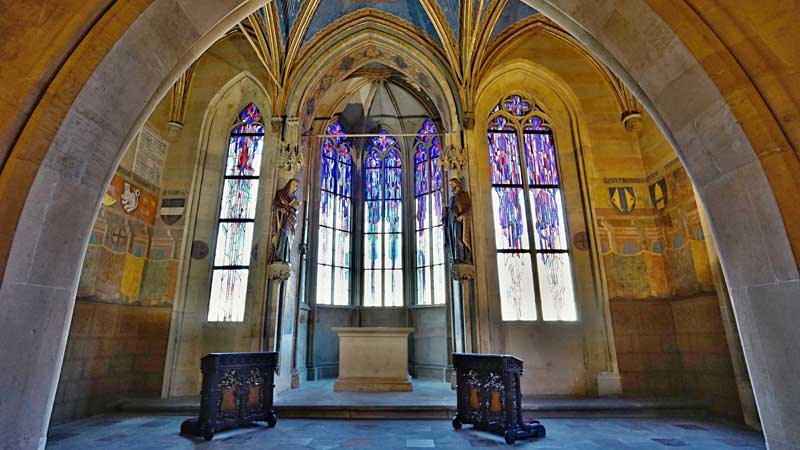
At the side of the town hall which faces the Tyn Church is the Mayor’s Hall (Primátorská Síň) which contains an interesting collections of portraits of the mayor’s of Prague.
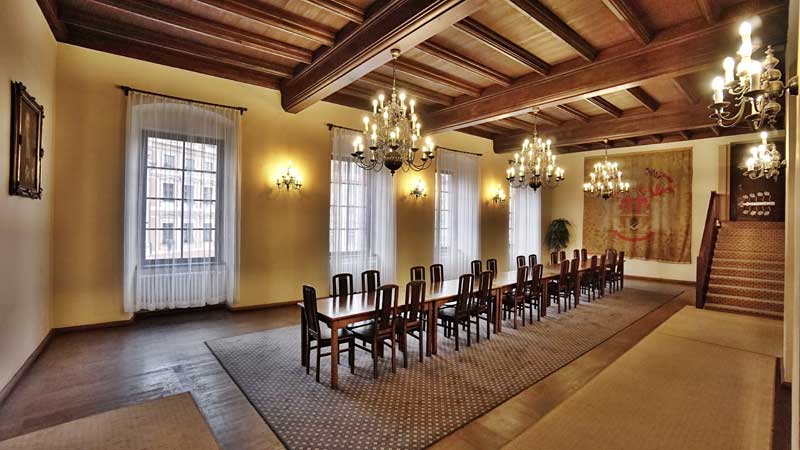
The Municipal Hall
Kytka’s insert – additional images:
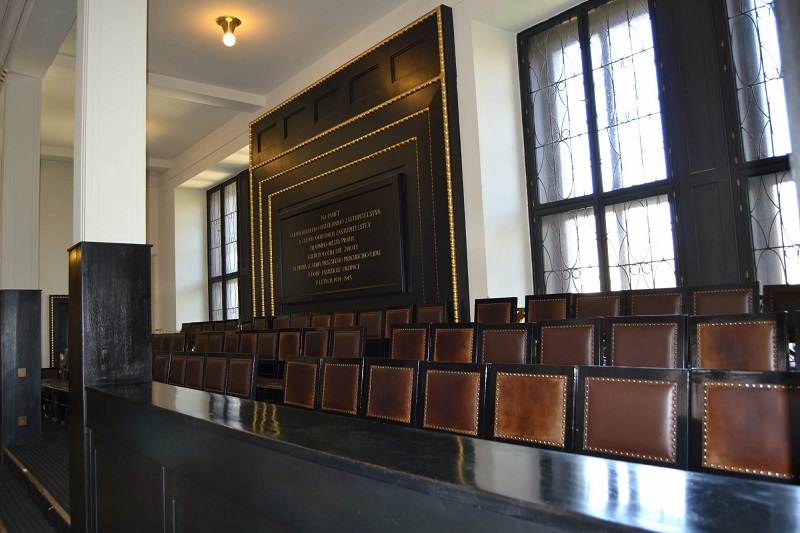
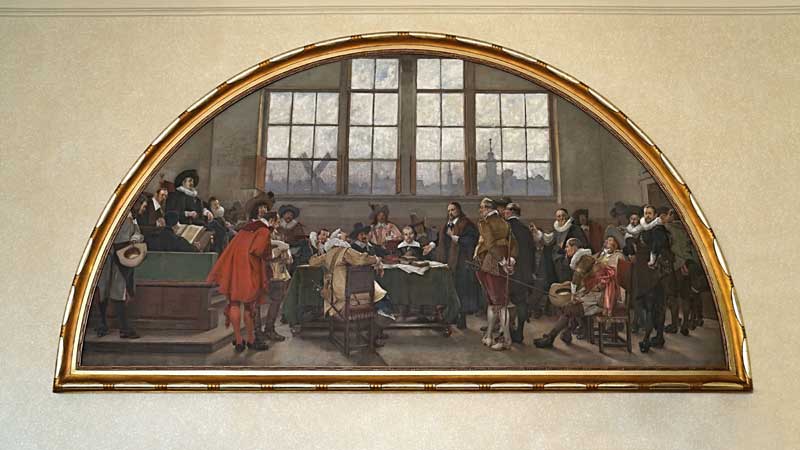
The antechamber to the Assembly Hall
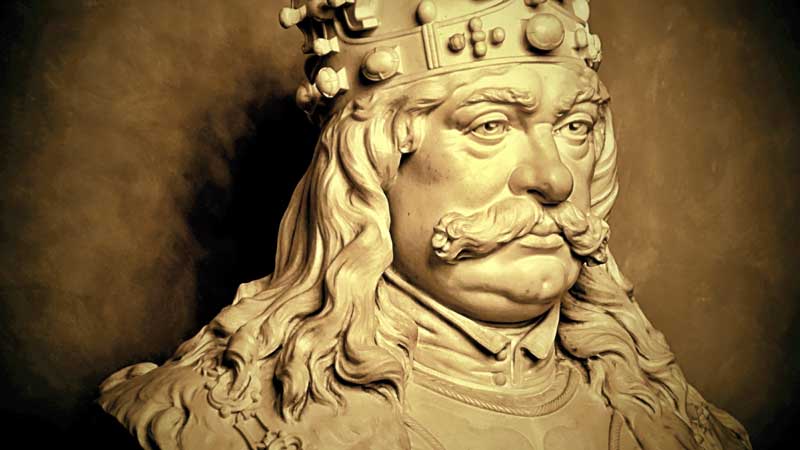
The George Hall (Czech: Jiříkova síň)
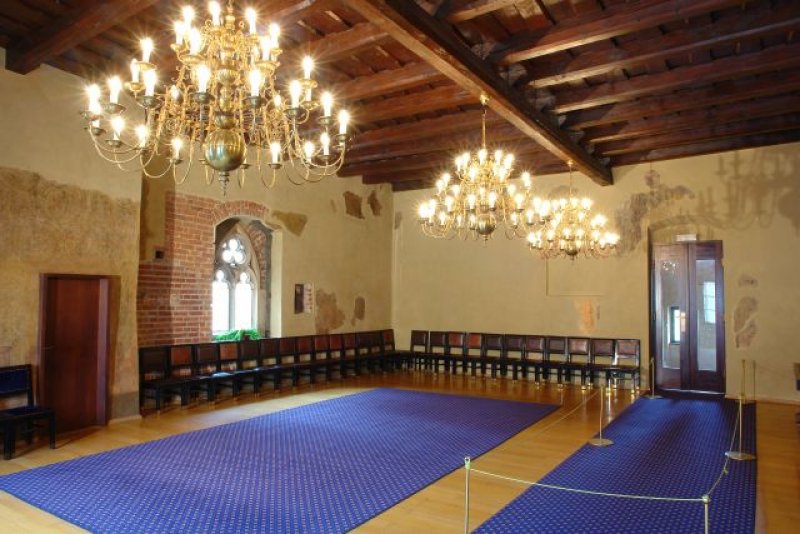
The George Hall (Czech: Jiříkova síň)
Count Lützow included several old photographs in the back of his book which did not scan well at all, so I have found a newer representation of what he wanted to share with those who were present that day.
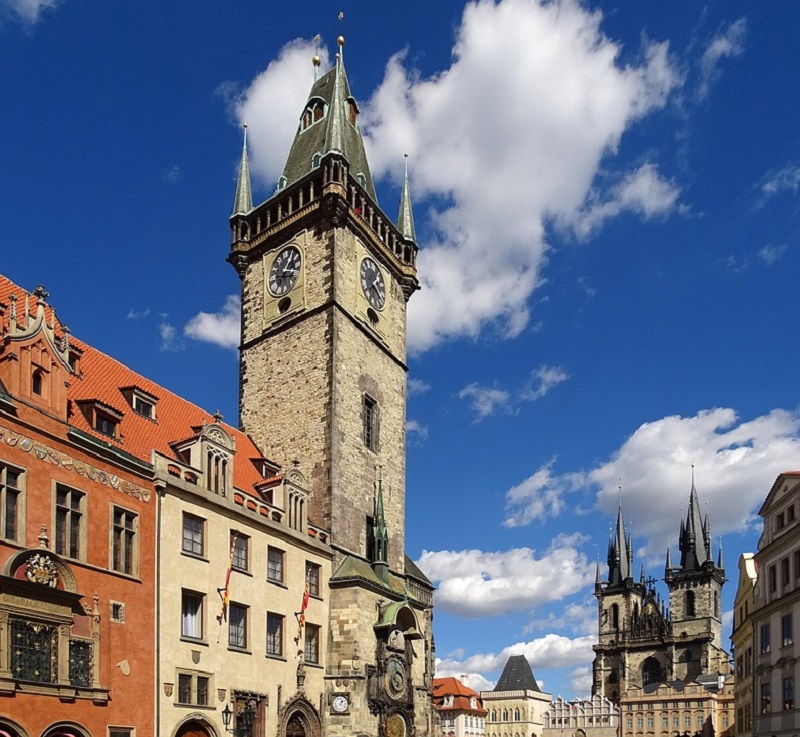
Old Town Hall and Church of Our Lady before Týn
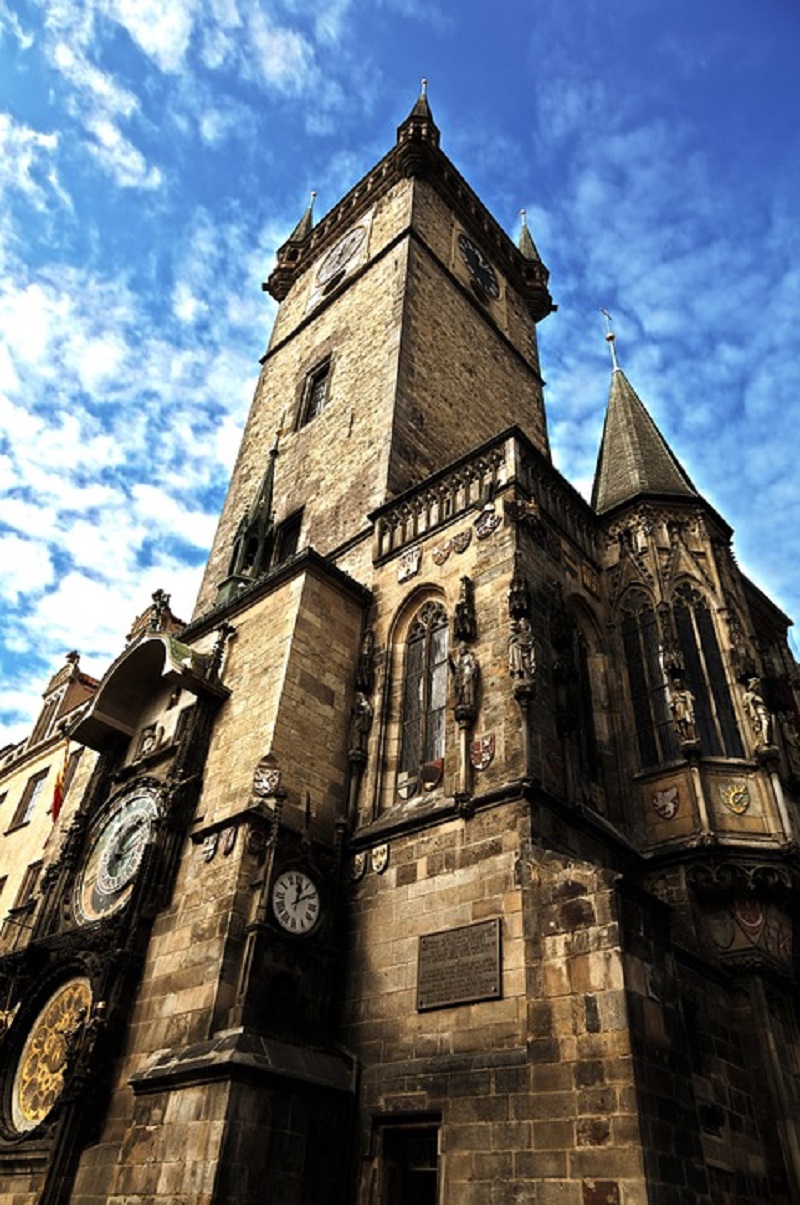
Old Town Hall with Chapel on the right
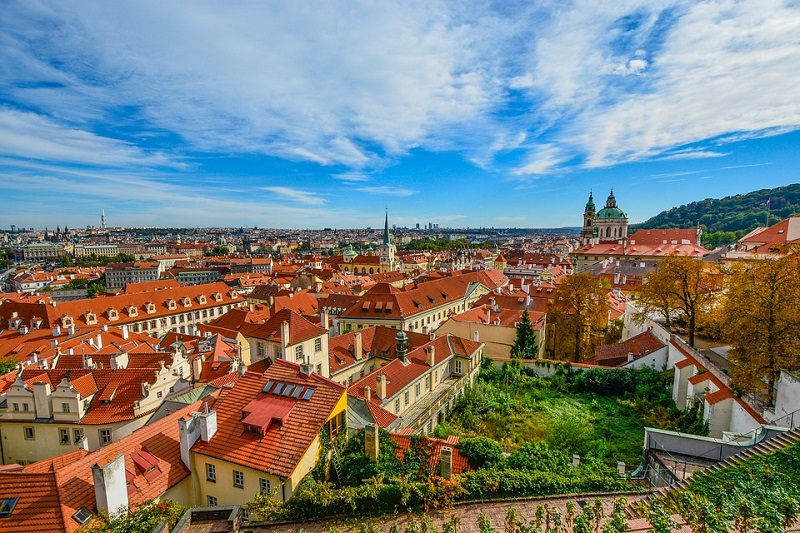
View of Prague from the Furstenberg Garden
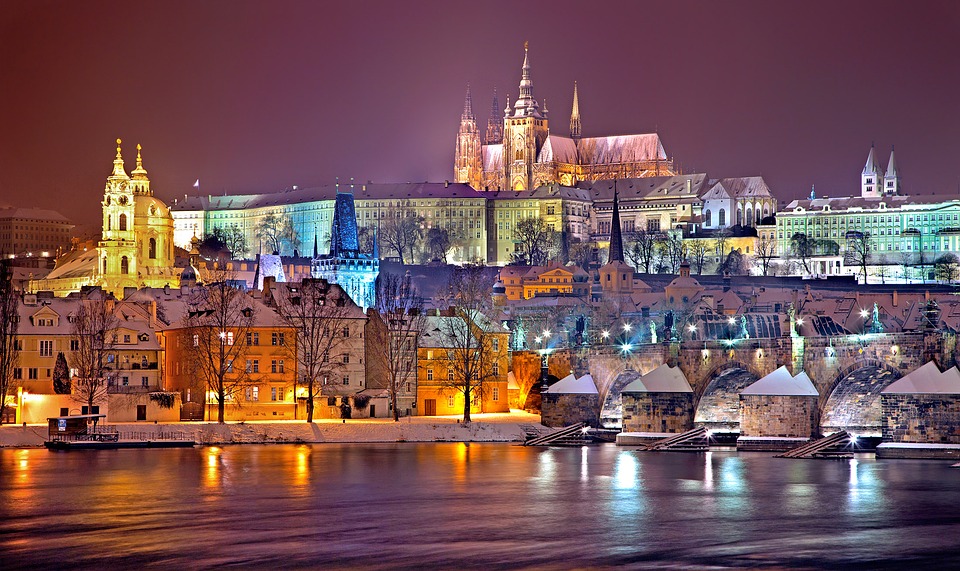
Beautiful Prague
If you have not already subscribed to get TresBohemes.com delivered to your inbox, please use the form below now so you never miss another post.
Remember, we rely solely on your donations to keep the project going.
Become a friend and get our lovely Czech postcard pack.

